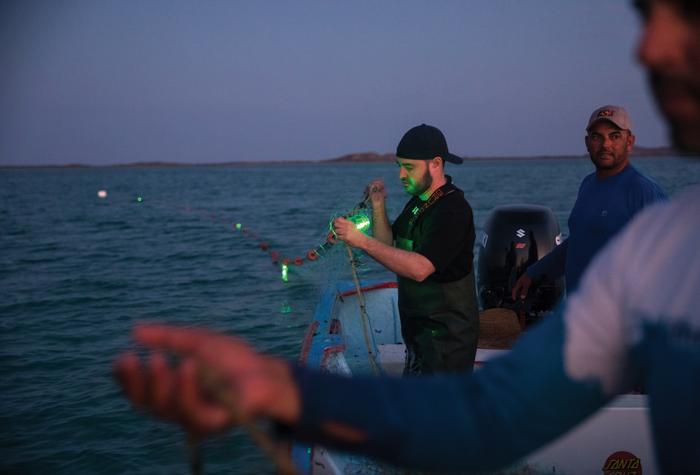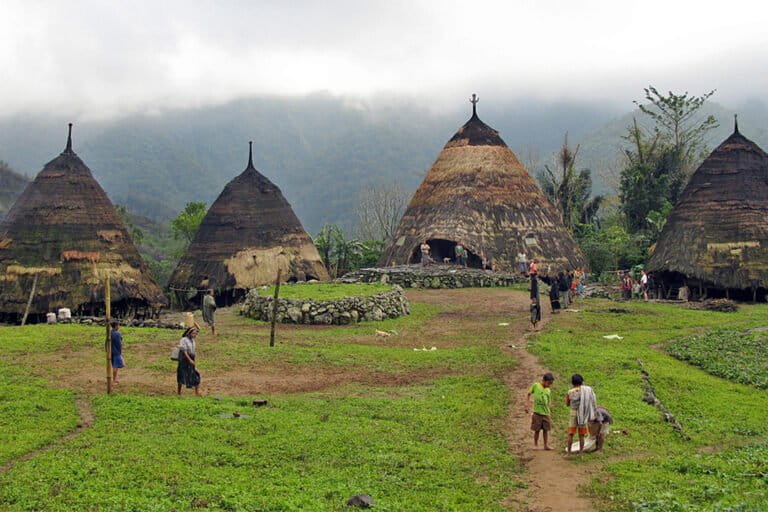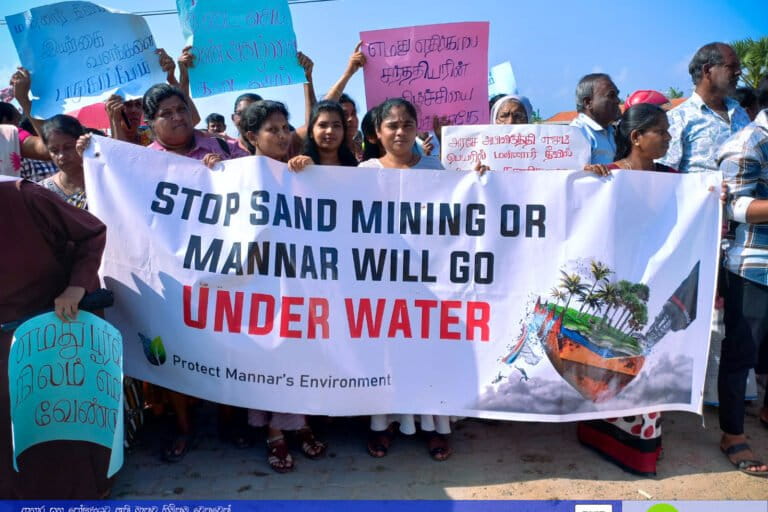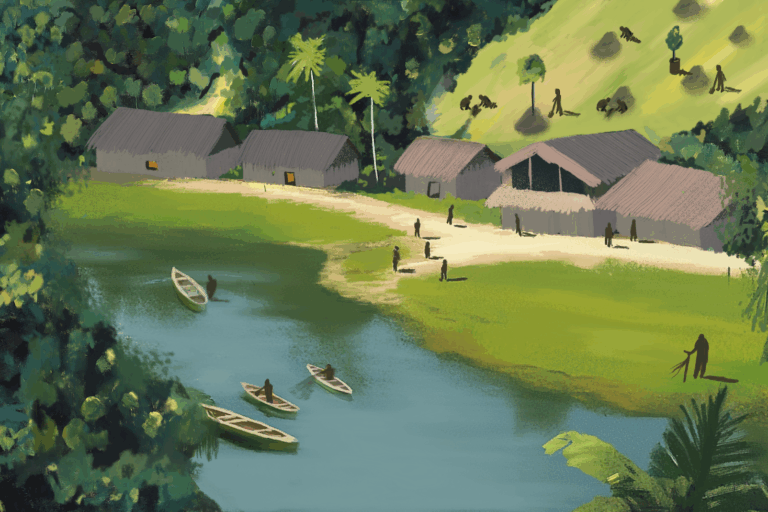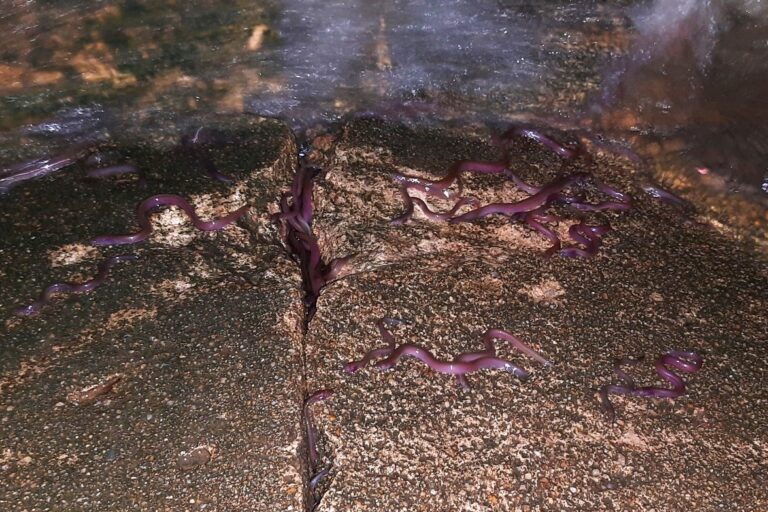- A new documentary, Scha’nexw Elhtal’nexw Salmon People: Preserving a Way of Life, premieres on PBS Nov. 4, following two Lummi families as they maintain fishing traditions amid declining salmon populations.
- In an interview, co-director Beth Pielert and Lummi fisher Tah Mahs Ellie Kinley discuss the film’s origins, salmon’s importance to Lummi culture, and current threats to wild salmon populations.
- For the Lummi people, salmon fishing is described as “everything” — it’s not just an activity but the foundation of their identity, with families tracing their lineage through traditional reef net sites and finding spiritual fulfillment in continuing ancestral practices.
- The filmmakers hope viewers will walk away with both understanding and hope, recognizing that while salmon face serious threats from fish farms and industrial development, there’s still time to protect these resilient fish that are essential to Lummi cultural survival.
The sacred relationship between the Lhaq’temish (Lummi) people and wild salmon takes center stage in a powerful new documentary premiering Nov. 4 on PBS.
Scha’nexw Elhtal’nexw Salmon People: Preserving a Way of Life follows two Lummi families as they carry forward ancestral fishing traditions in the Pacific Northwestern United States, even as they face dwindling salmon populations that threaten their cultural survival.
Through intimate portraits of Lummi fisher Tah Mahs Ellie Kinley, her late husband, Chexanexwh Larry Kinley, their family and elder Tla’kalin Ce’xen Steve Solomon, the film reveals how salmon fishing isn’t merely an activity for the Lummi people —it’s the very foundation of their identity, spirituality and connection to their ancestral waters.
Trailer for the new film: Scha’nexw Elhtal’nexw Salmon People: Preserving a Way of Life.
Mongabay interviewed the film’s co-director, Beth Pielert, and Tah Mahs Ellie Kinley. They discuss what inspired the project, the importance of salmon to the Lummi way of life, the threats facing wild salmon in the Pacific Northwest today and their hopes for the film’s impact.
Tah Mahs Ellie Kinley comes from a long line of fishers and is a passionate advocate for protecting the Salish Sea and the salmon that are integral to her tribe’s traditions and identity. Preserving this way of life for her children and grandchildren is paramount to her work.
Beth “Basa” Pielert has been making documentary films for 28 years. She was approached by Darrell Hillaire, executive producer of Children of the Setting Sun Productions, a Lummi leader and the film’s co-director, to help turn what began as a short film into a feature-length documentary for PBS. Pielert, who served as served as a producer, director, writer and editor on the documentary says she wanted to immerse viewers in the sights and sounds of the Lummi fishing way of life.
The film conveys what is at stake as salmon populations decline. “It’s everything,” Tah Mahs Ellie Kinley says of salmon’s significance. “As Larry says in the film, to know who you are, you need to know where you come from. We come from our reef net sites. We trace our families back to those sites. In the act of harvesting salmon, there’s a fulfillment that comes from doing that, traveling waters amongst your village sites. There is a feeling of home. All I can say is, it fills you up.”
The documentary film premieres on PBS via WORLD Local, USA on Nov. 4 at 5 p.m. PST/8 p.m. EST, YouTube and the PBS app as part of Native American Heritage Month programming.


The following interview has been lightly edited for length and clarity.
Mongabay: What inspired this film? How did this project start?
Beth Pielert: According to Darrell [Hillaire], the co-director and original creator of Salmon People: Preserving a Way of Life, there was a tremendous return of sockeye salmon in 2010. Millions of fish showed up on Lummi. The smell permeated the nation, spurring the fishers to action, readying their nets and boats to meet their greatest ancestor, sockeye [Oncorhynchus nerka].
When all that energy happened, and Darrell saw that positivity, he and Chexanexwh Larry Kinley began a conversation about the importance of capturing this story. This project really began in 2012 and 2013 when professor and videographer Georg Koszulinski filmed two interviews with Chexanexwh Larry Kinley. This was the origin of the short film Salmon People. But, you know, no one expected Larry to become so ill, which impacted many things. After the loss of Larry, we needed to go dormant out of respect. This is when the film pivoted. Like the salmon and the fishers do so well, all of us are going to need to learn to pivot. The film has gone on to inspire the Salmon People series and the [Children of the] Setting Sun Institute.
The origin for the film and this work comes from love — the love of salmon, love of family and love of Larry and from this friendship. When Darrell approached me, we had already been working lightly together for a couple of years, and he asked me to bring my then-24 years’ experience in documentary filmmaking and prior work with PBS. It was during COVID that Darrell asked me to come on and help him make the feature film.
When we earned the Vision Maker Media production grant and they came on as a partner, I suggested we follow the Kinleys and the Solomons as they prepared and fished for sockeye, meeting the moment we’re at with the climate, with the fish and with these families who are affected by all of this.
Mongabay: Can you talk more about the legacy of Chexanexwh Larry Kinley (Ellie’s late husband) and how that’s reflected in the film?
Tah Mahs Ellie Kinley: I love that it’s his fishing legacy in the film. He was known throughout the country for his tribal work as a chairman and the work he did to guide Southern California tribes toward sovereignty. Our film gives folks a chance to see a whole other side of Larry that was equally important to him.

Mongabay: What is the importance of salmon to your family and to the Lummi people?
Tah Mahs Ellie Kinley: It’s everything. As Larry says in the film, to know who you are, you need to know where you come from. And we come from our reef net sites. We trace our families back to those sites. In the act of harvesting salmon, there’s a fulfillment that comes from doing that, traveling waters amongst your village sites. There is a feeling of home. All I can say is, it fills you up.
It gets you through the winter, but we’re just dying for that next time that we get to go back out there. We’re built around our reef net sites. When you’re out there doing what your ancestors have done since time immemorial, there’s a feeling that comes over you. You know you’re in the spot right then that you need to be.
Mongabay: Can you tell me about the role of women in this film and story?
Tah Mahs Ellie Kinley: With Lummi, there have always been women in fishing. Larry talks in the movie about how his own mom fished in the river. I fished with my dad, and Larry had his two girls on the boat too.
Beth Pielert: Ellie also has a great story about a woman in her family who inspired her — her aunt who gillnetted by herself up at the border of Canada.
Tah Mahs Ellie Kinley: My dad’s sister, Dora Lee Solomon. There was nowhere she wouldn’t go in her small, red gillnetter to fish, and this included up near the border of Canada. She was and still is my inspiration. She was a full-time fisher. She even learned to dive with the tribe, did diving in our aquaculture and was the first woman on our fish commission. When I ran for our fish commission, I said I was simply following in my auntie Dora Lee’s footsteps.
Mongabay: And what about now?
Tah Mahs Ellie Kinley: There are more women fishing now than when I started. You see quite a few women out fishing.
Beth Pielert: I was happy to know you and the family were out fishing chum [Oncorhynchus keta] recently and had a decent fishery. That gives me hope. You’re so happy to be on the water with your family and waiting to get word to go out again. This makes me so happy.
Tah Mahs Ellie Kinley: Me too. It fills us up. It allows us to have the energy to do the rest of the work we need to do to make a difference.


Mongabay: What are some of the current threats that you want to highlight for salmon in your region?
Tah Mahs Ellie Kinley: Our main fishery is the Fraser River stock, and the biggest threat to that are fish farms, plain and simple. You can see the number of fish farms growing over the last 20 years and the corresponding decline in the wild stocks coming off the Fraser.
Mongabay: The Canadian government has not fulfilled its commitment to remove open-net pen salmon farms by 2025, instead extending that deadline to 2029. How do you feel about this?
Tah Mahs Ellie Kinley: I’m not surprised. I have very little faith in the Canadian government. I hate to bad mouth them, but I am directly affected. Nothing they do really surprises me.
There are also plans to build Roberts Bank Terminal 2, the world’s biggest cargo container ship terminal at the mouth of the Fraser River. They’ve just built LNG, liquefied natural gas, docks there. There are Southern Resident killer whales [Orcinus orca] there. The water around Roberts Bank has been marked as their critical habitat, and yet they’re going to build this huge container ship terminal.
We do not know if we’ve passed the tipping point in the Salish Sea yet for whales being able to hunt salmon. The noise from all the ships that are there now interferes with their ability to hunt. We’re going to build a dock that will bring in many more ships per day. It could be the end, the last straw.
It’s a whole new terminal, a whole new dock that’ll be coming out directly beside the original one. The way it juts out from the Canadian land, it nearly touches the U.S. It will bring in container ships that we don’t see now, ones that don’t fit through the Panama Canal because they’re too big.
Mongabay: Are there campaigns against this?
Tah Mahs Ellie Kinley: We have been working on it for 10 years. The tribe did manage to get their foot in the door and get the Canadian government to admit that we were not consulted. They are going to go back and do some consulting with us over it. But it’ll likely be lip service.

Mongabay: What do you want people to know who are watching this film?
Tah Mahs Ellie Kinley: It’s gonna take every one of us. You can’t sit back and think that it’s just gonna happen. Everybody’s got to play a part in it. If you live here in the Northwest, we all have a part in this. And it goes even farther than the Northwest. If you’re on the East Coast buying farmed salmon from B.C. [British Columbia], well, you’re part of the problem too. It doesn’t matter if you just live here. Everybody has to get in on this fight because we can’t lose this one. If we lose the salmon, we lose us. We’re next. It’ll be the salmon, the orca — and then it’ll be us.
Beth Pielert: Something that I’ve been feeling for a while now is this connection between big box stores, the shipping industry and farmed salmon. For example, where I live in Half Moon Bay, California, I look out into the water and see these huge shipping containers coming through. Those containers hit and kill many of our humpback whales [Megaptera novaeangliae].
A lot of people are ordering things online. Shipping is one of the biggest polluters because they’re underregulated. Then they bring in farmed salmon to stores like Trader Joe’s and Costco. People see farmed salmon and think it looks great. If you don’t know what to look for, you think you’re doing the right thing by buying this farmed fish. But it has contributed to major pollution.
These are things that are easy for people to learn a bit more about and make different choices, even in how they shop.

Mongabay: Tell me about the elements that bring the film to life, such as the soundscape.
Beth Pielert: I got very excited about the idea of surround sound for this film. I worked with Scott Hirsch, who I had collaborated with on my previous film, Out of the Poison Tree. Scott had just gotten a master’s degree in ambient audio and was teaching at NYU film school.
He provided us with this cool 360° microphone that captures surround sound. It looks like a fuzzy ball. We intentionally brought that microphone to the shores and the rivers to get that sense of water all around. On the boat we had to be more strategic when capturing sounds and isolate the specifics. In the montage of fishing scenes, you get a sense of the rope coming up, the boom of the equipment and other isolated audio tracks.
I wanted to immerse people in the sounds of being near a river, on the water, traveling and hearing the wind. That’s the sound of the place where the Lummi fish, their whole homeland up and down the islands. While I love the short film Salmon People, there was barely any wild sound in it. With the feature, I wanted to push further and really lean into the sounds of this place to create a more sensory experience.
We also focused on featuring only Indigenous musicians, showcasing their interpretations of genres like jazz. It’s been fun to stretch in that direction and push people a bit. Sometimes people don’t get it right away, but it grows on them. And then they’re like, ‘Wow, that’s really cool!’
Mongabay: Are there plans to use this film or content as an educational tool in schools?
Beth Pielert: There’s a nearly 60-page study guide that’s getting laid out right now. The guide is directed toward middle and high school teachers to help provide them with tools and expanded content we touch upon in the film. We’re learning more about our true history. There’s so much opportunity there to better understand the treaties and what sovereignty means. To learn about the 1905 overfishing, the fish traps, fish farms and all the bureaucracy the tribes still need to negotiate just to be able to practice their way of life.
I think after seeing the film, people will want to know what they can do. The study guide and a simple toolkit [10 things you can do for salmon right now] will help. We want people to understand there’s hope.

Mongabay: Do you have hopes of what people will walk away with from this film?
Tah Mahs Ellie Kinley: Hope. I’m sitting in the middle of all of this. I have hope. I mean, I would not be doing this if I didn’t have hope. We can still turn this around. We can still bring the salmon back, because salmon are so resilient. Those fish [on the Klamath river] have shown us that with the dam removals and how far they traveled when they haven’t gone that far in 110 years. They knew to still go home.
Our way of life is so important. I hope people understand what’s at risk. It really comes down to the fact that we can’t lose the salmon, because the salmon are who we are. We say it in the film: Who are we without salmon?
Banner image of Steve Solomon and family out fishing in their ancestral territories near modern day Washingotn state. Image courtesy of Children of the Setting Sun Productions.
Liz Kimbrough is a staff writer for Mongabay and holds a Ph.D. in ecology and evolutionary biology from Tulane University, where she studied the microbiomes of trees. View more of her reporting here.
Last of the reef netters: An Indigenous, sustainable salmon fishery
FEEDBACK: Use this form to send a message directly to the author of this post. If you want to post a public comment, you can do that at the bottom of the page.







